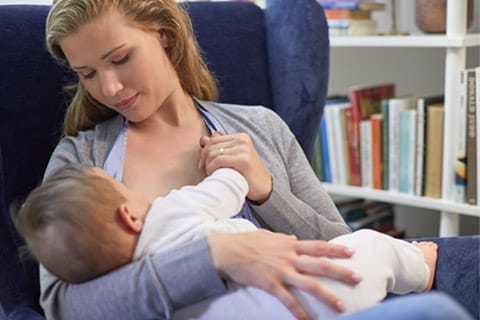
How to solve breastfeeding problems

When you’re bottle feeding your little one it can seem like you need a never-ending supply of clean baby bottles! But what options are there for sterilising bottles? Here we share our tips and tricks, including how to cold-water-sterilise baby bottles, how to boil them, whether you can put baby bottles in dishwashers, and how often to sterilise baby bottles.
Especially in the first few weeks, a baby's immune system is not yet fully active, as it has not yet had time to get used to its new environmental influences. For optimal hygiene, it is recommended to sterilise new baby bottles and teats before first use, and after using them each time. It’s also important to sterilise dummies for the same reasons.
In the first six months, baby bottles and teats should be sterilised after every use. From seven months, the baby's immune system is more active, so it is enough to clean baby bottles after each use (before milk residues can settle) and then sterilise them once a day. Before sterilisation, the bottle must be properly cleaned.
You should continue with daily sterilising until your baby is at least 12 months old.1 In order to avoid stomach or intestinal problems and to avoid the build-up of germs and bacteria, it’s important to clean baby bottles regularly and properly.
For cleaning, special bottle brushes are best suited. Here's how to clean a baby bottle:
After cleaning, you can then sterilise the bottle using one of the following methods. 2. How to use a steam steriliser Devices like the ones you’ll find in the Philips Avent bottle warmer and steriliser range are specially designed for sterilising baby bottles and teats. The ones in our range can also be used to clean dummies, breast pumps and teething rings. As long as you follow the manufacturer’s instructions, you should find it very straightforward. 3. How to cold water sterilise baby bottles You don’t have to use heat, as there are also cold-water sterilising solutions. You’ll need to follow the manufacturer’s instructions, making sure you remove any air bubbles from the teats or bottles first. How long do you need to sterilise baby bottles for when using this method? Typically, you’ll need to leave your feeding equipment in the sterilising solution (under a plunger or floating cover) for at least 30 minutes.2
1. How to sterilise baby bottles with boiling water
You don’t need a lot of equipment for this – a saucepan and some water is enough.
The dishwasher is not suitable for sterilising baby bottles, as most dishwashers are not heated to over 70 degrees during the cleaning process, so germs and bacteria are not sufficiently killed. If your dishwasher has a suitable rinsing programme in which the heat is above 70 degrees, then it is best to place the bottles and teats upside down in the upper dishwasher compartment. Be careful when choosing dishwasher tablets, as these can often be aggressive and can attack the material of the teat. Always check the teat for cracks, as germs can easily form there.
It might be a case of trial and error when looking for the right teat and bottle. Philips Avent Natural baby bottles have soft, breast-shaped teats that encourage a natural latch and make the switch between breast and bottle as smooth as possible. It’s perfectly normal for babies to take a little while to get used to bottle feeding, but with a little patience and our tips and tricks for bottle feeding, like what to do when your baby is refusing a bottle, they’ll soon get the hang of it.
Fast bottle warmer
SCF355/00